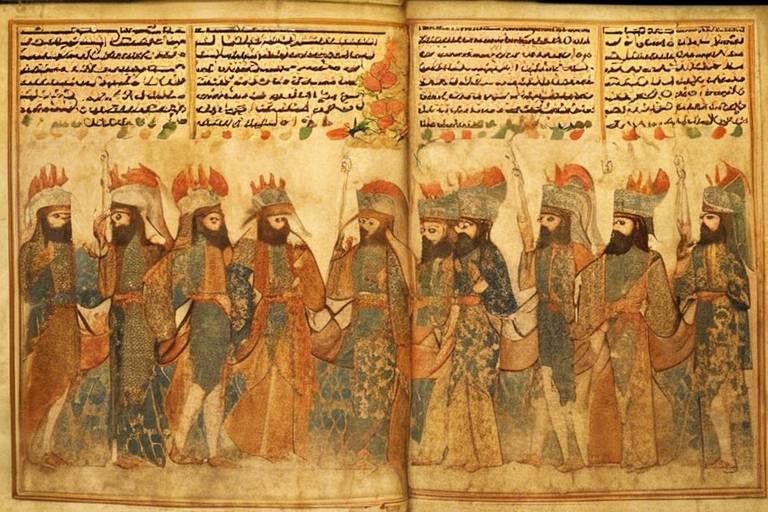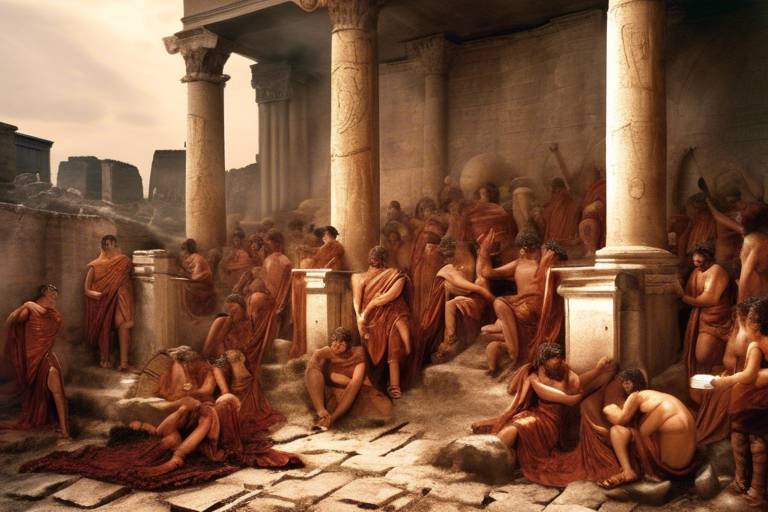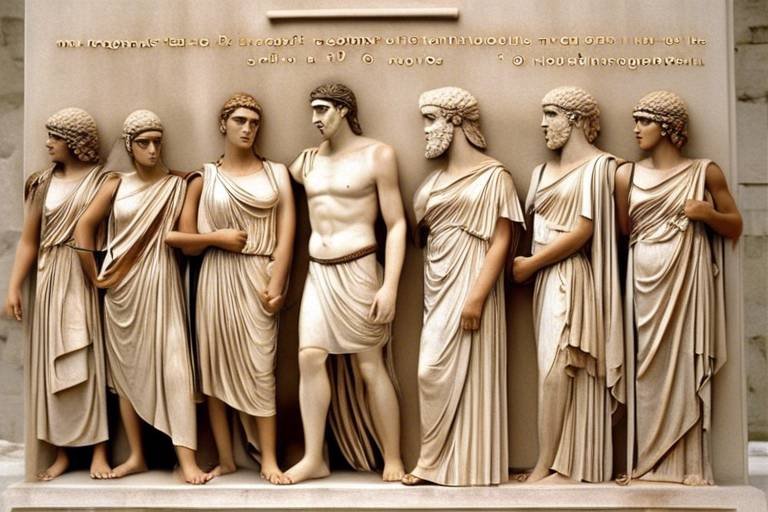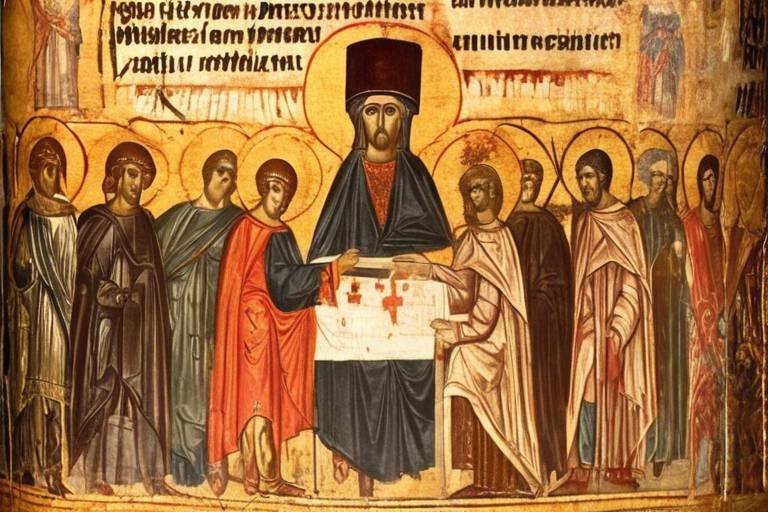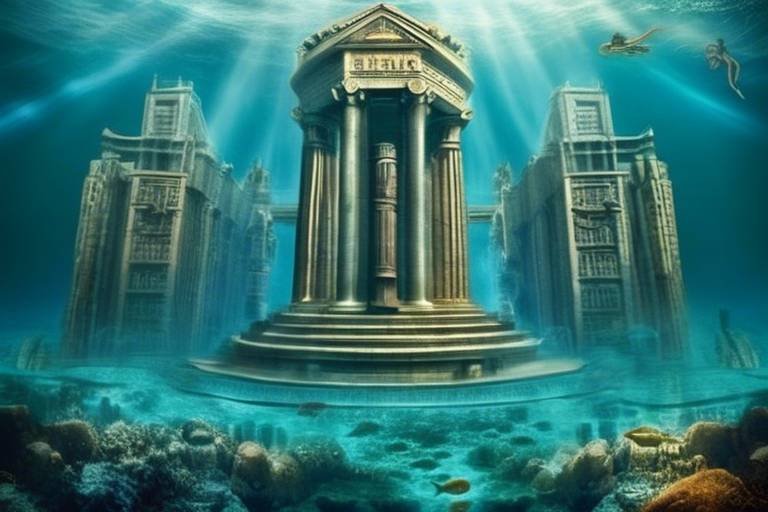The Secrets of the Lost Art of the Minoans
Exploring the mysterious and captivating art of the ancient Minoan civilization takes us on a journey through time, unveiling the intricate designs and advanced techniques that define their artistic legacy. Imagine stepping into a world where art was not just decoration but a window into a civilization's soul, revealing stories of life, beliefs, and creativity etched into every artifact and architectural marvel.

History of the Minoans
The Minoan civilization, flourishing on the island of Crete during the Bronze Age, is renowned for its remarkable artistic achievements and sophisticated culture. Dating back to around 2600 BC, the Minoans established a complex society characterized by impressive architectural structures, intricate artwork, and advanced maritime trade networks that extended throughout the Aegean Sea.
At the heart of Minoan society was the magnificent Palace of Knossos, a sprawling complex believed to be the political and administrative center of their civilization. The Minoans were skilled builders, utilizing multi-story buildings, paved streets, and elaborate drainage systems, showcasing their architectural ingenuity.
Known for their peaceful existence and prosperous economy, the Minoans engaged in extensive trade with neighboring cultures, importing and exporting a variety of goods such as pottery, textiles, and precious metals. This commercial activity not only enriched their society but also facilitated cultural exchanges that influenced their artistic expressions.
The Minoans had a hierarchical social structure, with a ruling elite overseeing various administrative functions and religious rituals. Their religion, characterized by a reverence for nature and fertility, played a significant role in shaping their artistic motifs and architectural designs, reflecting a deep spiritual connection to the natural world.
Despite their cultural achievements and economic prosperity, the Minoan civilization faced a mysterious decline around 1450 BC, leading to the eventual collapse of their once-thriving society. The exact reasons for their downfall remain a subject of debate among historians, with theories ranging from natural disasters such as earthquakes and tsunamis to invasions by foreign powers.
Nevertheless, the legacy of the Minoans endures through their exquisite artwork, innovative architectural techniques, and profound influence on subsequent civilizations in the Mediterranean region. Their enigmatic history continues to captivate scholars and art enthusiasts alike, offering a glimpse into a lost world of artistic splendor and cultural sophistication.

Minoan Artifacts and Architecture
The Minoan civilization, known for its remarkable artistry, has left behind a treasure trove of artifacts and architectural wonders that continue to captivate us today. From intricate pottery to stunning frescoes, the Minoans showcased their advanced techniques and artistic prowess in various forms.
One of the most iconic aspects of Minoan art is the vibrant frescoes found at the Palace of Knossos. These frescoes depict scenes of everyday life, religious rituals, and mythological figures, offering a glimpse into the culture and beliefs of the Minoan people. The intricate details and vivid colors of these frescoes are a testament to the skill and creativity of Minoan artists.
In addition to frescoes, Minoan pottery is another highlight of their artistic legacy. The Minoans were known for their intricate designs and innovative pottery techniques. Different styles of pottery served various purposes in Minoan society, from everyday use to religious ceremonies. The craftsmanship and attention to detail in Minoan pottery reflect the importance of art in their culture.
When exploring Minoan architecture, we are met with awe-inspiring structures that showcase the engineering and artistic abilities of this ancient civilization. The palaces and buildings of the Minoans were characterized by intricate layouts, advanced construction techniques, and decorative elements that reflected their artistic sensibilities. The grandeur of Minoan architecture continues to inspire admiration and wonder.

Frescoes of Knossos
The are a mesmerizing collection of vibrant wall paintings discovered at the ancient Palace of Knossos on the island of Crete. These exquisite frescoes provide a window into the daily life, religious beliefs, and artistic sophistication of the Minoan civilization.
One of the most famous frescoes found at Knossos is the Prince of the Lilies, depicting a young prince in a ceremonial pose, symbolizing power and prestige. The intricate details and vivid colors used in these frescoes showcase the Minoans' mastery of art and their penchant for capturing movement and emotion in their works.
The Dolphin Fresco is another remarkable piece that adorns the walls of Knossos, portraying a lively scene of dolphins leaping over the sea. This artwork not only highlights the Minoans' connection to the sea but also their skill in creating dynamic and engaging compositions.
Moreover, the Bull-Leaping Fresco is a captivating depiction of a daring acrobatic feat where individuals somersault over a charging bull. This iconic artwork not only showcases the Minoans' bravery and athleticism but also their artistic innovation in capturing movement and energy in a static medium.
Through these intricate frescoes, the Minoans have left behind a legacy of artistic brilliance that continues to fascinate and inspire admirers of ancient art and culture. The Frescoes of Knossos serve as a testament to the creativity, skill, and cultural richness of this enigmatic civilization.

Minoan Pottery
Minoan pottery stands as a testament to the exceptional craftsmanship and artistic flair of the ancient Minoan civilization. The pottery produced by the Minoans was not merely functional but also served as a canvas for intricate designs and symbolic motifs that reflected their cultural beliefs and practices.
The Minoans were known for their diverse pottery styles, ranging from simple utilitarian pieces to elaborately decorated vessels. One of the most renowned pottery styles of the Minoans is the Kamares ware, characterized by its vibrant colors and intricate floral and geometric patterns.
Furthermore, the Minoans were pioneers in the art of pottery decoration, utilizing techniques such as slip painting, incising, and relief decoration to adorn their vessels. These decorative elements often depicted scenes from everyday life, religious ceremonies, and mythological narratives, providing valuable insights into Minoan society and beliefs.
Moreover, Minoan pottery played a significant role in their social and religious practices. Vessels used for religious ceremonies were often adorned with sacred symbols such as the double axe, bull, and snake, reflecting the Minoans' reverence for nature and spirituality.
The intricate designs and advanced pottery techniques employed by the Minoans not only showcased their artistic prowess but also demonstrated their mastery of craftsmanship. Each piece of Minoan pottery tells a story, preserving the legacy of this ancient civilization through the ages.

Minoan Religious Practices
The religious practices of the Minoans were deeply intertwined with their everyday lives, reflecting a profound connection to nature and spirituality. Central to their beliefs was the worship of various deities associated with the natural world, such as the Earth Mother Goddess and the Bull God. These divine figures were depicted in Minoan art and played a significant role in religious ceremonies and rituals.
One of the most intriguing aspects of Minoan religious practices was the use of sacred symbols, which held symbolic meanings and spiritual significance. The double axe, known as the "labrys," symbolized power and protection, while the bull represented strength and fertility. Snakes were also revered as symbols of transformation and renewal, reflecting the cyclical nature of life and death.
Art played a crucial role in Minoan religious ceremonies, with vibrant frescoes adorning the walls of temples and palaces, depicting scenes of rituals, processions, and offerings to the gods. These artistic representations provided a visual narrative of the Minoans' spiritual beliefs and practices, offering insights into their complex worldview and reverence for the divine.
Moreover, the Minoans engaged in sacred rituals and ceremonies that involved music, dance, and feasting, aimed at honoring the gods and seeking their favor. These communal gatherings fostered a sense of unity and shared spiritual experience among the Minoan people, reinforcing their cultural identity and sense of belonging within the divine cosmos.

Sacred Symbols in Minoan Art
The Minoan art is adorned with sacred symbols that hold deep spiritual significance, offering a glimpse into the religious beliefs of this ancient civilization. Among the most prominent symbols in Minoan art are the double axe, the bull, and the snake. Each of these symbols carries layers of meaning, intertwined with the Minoans' reverence for nature and their intricate religious practices.
The double axe, also known as the labrys, is a symbol often associated with fertility and the power of the earth. It represents the dual nature of existence, embodying both the masculine and feminine energies that were central to Minoan spirituality. The presence of the double axe in Minoan art signifies a connection to the natural world and the cycles of life and death.
Similarly, the bull holds a special place in Minoan symbolism, symbolizing strength, virility, and sacrifice. Bulls were revered in Minoan culture, depicted in various artistic forms such as frescoes and pottery. The image of the bull in Minoan art reflects the importance of animal worship and the role of sacred animals in religious rituals.
Another significant symbol in Minoan art is the snake, often depicted in a coiled or spiraling form. The snake symbolizes regeneration, transformation, and the underworld in Minoan belief systems. As a creature that sheds its skin and emerges anew, the snake represents the cycle of life, death, and rebirth, echoing the Minoans' spiritual connection to the natural world.

Decline of the Minoan Civilization
The decline of the Minoan civilization remains shrouded in mystery, with various theories attempting to explain the sudden disappearance of this advanced society. One prevalent theory suggests that a series of natural disasters, such as earthquakes and volcanic eruptions, struck the island of Crete, leading to widespread destruction and disruption of Minoan life. The catastrophic eruption of the Thera volcano around 1600 BCE is often cited as a significant event that may have contributed to the downfall of the Minoans, causing tsunamis and crop failures that severely impacted their economy and infrastructure.
Additionally, the Minoans may have faced external threats from invading forces, such as the Mycenaeans from mainland Greece, who are believed to have established control over parts of Crete during the late Bronze Age. This influx of foreign influence and potential conflicts could have weakened the Minoan civilization, leading to its eventual decline. Internal strife and political instability within Minoan society may have also played a role in their downfall, as power struggles and social unrest could have destabilized the once-thriving culture.
Despite the uncertainties surrounding the exact cause of the Minoan civilization's decline, one thing is clear – the legacy of their art and culture continues to captivate and inspire people around the world. The intricate designs, vibrant frescoes, and innovative architectural achievements of the Minoans serve as a testament to their creativity and skill, leaving behind a rich artistic heritage that transcends time.

Legacy of the Minoans
The legacy of the Minoans continues to intrigue and inspire scholars, artists, and historians alike, leaving a profound impact on the world of art and culture. Despite the mysterious disappearance of the civilization, their artistic achievements have stood the test of time, influencing subsequent civilizations and artistic movements.
One of the most significant aspects of the Minoan legacy is their innovative approach to art and architecture. The intricate designs, vibrant colors, and advanced techniques displayed in Minoan artifacts and frescoes have served as a source of inspiration for artists throughout history. The Palace of Knossos, with its elaborate frescoes depicting scenes of daily life and mythology, remains a testament to the artistic sophistication of the Minoans.
Furthermore, the symbolic motifs and sacred symbols found in Minoan art have sparked scholarly debates and interpretations, shedding light on the spiritual and religious beliefs of the ancient civilization. The double axe, bull, and snake motifs, among others, continue to fascinate researchers, offering glimpses into the symbolic language of the Minoans and their connection to nature and the divine.
Despite the enigmatic decline of the Minoan civilization, their legacy lives on through the ongoing archaeological discoveries and research efforts aimed at unraveling the secrets of their lost artistry. Modern scholars and archaeologists continue to study Minoan artifacts, architecture, and religious practices, seeking to preserve and honor the rich cultural heritage of this ancient civilization.
Frequently Asked Questions
- What is the significance of Minoan art?
Minoan art is significant for its intricate designs, vibrant colors, and advanced techniques that showcase the artistic prowess of the ancient Minoan civilization. It provides insights into their culture, religious beliefs, and daily life, making it a valuable source for understanding this enigmatic society.
- What are some common motifs found in Minoan art?
Common motifs found in Minoan art include the double axe, bull, snake, and various natural elements. These symbols hold deep cultural and religious significance, representing aspects of nature, fertility, and spirituality that were central to Minoan beliefs and practices.
- How did Minoan pottery contribute to their society?
Minoan pottery was not only utilitarian but also served symbolic and ritualistic purposes in their society. The intricate designs and diverse styles of pottery reflected social status, religious ceremonies, and artistic expression, highlighting the importance of pottery in Minoan culture.
- What led to the decline of the Minoan civilization?
The decline of the Minoan civilization is attributed to various factors, including natural disasters like volcanic eruptions, invasions by outside forces, and internal conflicts. These events ultimately led to the downfall of this once-thriving ancient culture.
- What is the legacy of the Minoans on later civilizations?
The legacy of the Minoans can be seen in the influence of their art, architecture, and cultural practices on subsequent civilizations in the Mediterranean region. Their artistic achievements and innovative techniques have left a lasting impact on art history and continue to inspire scholars and artists today.


